ACRI/CESA Conference 2018: Opening address by Geoff Raby
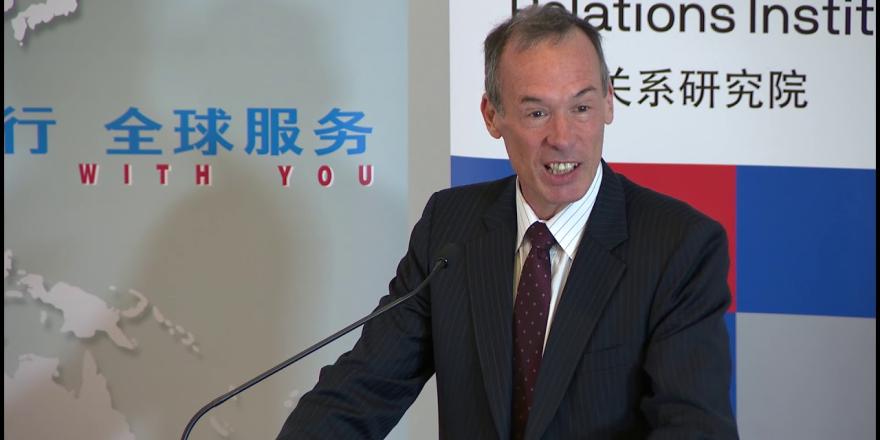
ACRI/CESA Conference 2018: Opening address by Geoff Raby
The Australia-China Relations Institute (ACRI) at the University of Technology Sydney (UTS) welcomed Dr Geoff Raby, former Australian Ambassador to China and CEO of Geoff Raby & Associates, to deliver the opening address at the 30th Annual Chinese Economics Society of Australia (CESA) Conference.
Dr Raby also participated in a Q&A session with the audience chaired by Professor James Laurenceson, ACRI Deputy Director.
The text of Dr Raby's speech is available below.
Lessons from China’s 40 years of Reform – a very personal reflection
Geoff Raby
June 16 2018
I am delighted to have been asked to open this conference which is occurring on the 40th Anniversary of the launching of China’s reforms and open-door policies, policies that have changed China and the world.
There was nothing pre-destined about this. There was no certainty that they would work or that China would not, as it had done so often before, fracture and implode. The policy risks that Deng Xiaoping took 40 years ago were immense. The political risks were even greater. Yet here we stand today with China utterly transformed economically and socially but hardly at all politically. China is now a protean force on the world stage, leading in the shaping of a new world order – for better or worse.
I am sure this Conference will have many papers on China’s past, present and future economic performance replete with much excellent quantitative analysis. So, with your indulgence, I thought it might be interesting for you to hear how I came to spend the best part of 34 years – almost the entire reform journey – working on the Chinese economy in one capacity or another. And to share some of my experiences and lessons and a few, I hope, interesting and amusing anecdotes.
ONA
Thirty-four years ago, to this month, I received an exceedingly embarrassed telephone call in Melbourne where I lived from someone in Canberra. The job that I had been expecting to take in the Office of National Assessments (ONA) as the Indonesia economic analyst was no longer available. They had been unable to wait any longer for my security clearance. The Prime Minister’s interest in Indonesia was such that they could delay no longer. ONA reports directly to the Prime Minister.
I was dumfounded. I had already resigned from the Economics Faculty at La Trobe University where I was Senior Tutor in Economic History. Plans were well underway to move myself and my life to Canberra, a city I had only fleetingly visited on two occasions: one an overnight stop on a drive from Victoria across the Snowy Mountains to the south coast of NSW and the other for my job interview at ONA.
In the moment, which felt like an age, before he could continue, my mind filled with disappointment, disbelief and despair about a new future denied. I readily accepted that I did not know much about Indonesia and its economy, other than having back packed through there a few years previously and having taken a couple of undergraduate courses on development economics taught by an Indonesian expert, Ken Thomas.
But over the months it had taken for my security clearance to come through I had, between marking essays and exam papers and working on my PhD thesis, been diligently swatting up on Indonesia and its economy. Little did I know then that expertise in the public sector was something acquired on the job and on the run. Bureaucrats need to be able to jump quickly and adroitly from different tasks and different subjects. What matters then is not so much mastering a subject but rather mastering first principles. It took a little time for me to learn that.
Why those trained in economics often do so well in the public sector is that economics has a toolbox of a few but powerful analytical concepts which can be deployed across a wide range of subject matter to produce sound policy advice.
The apologetic voice from Canberra on the other end of the line continued. While I would not be the Indonesian economic analyst, I would be the China economic analyst – a country I knew even less about then and had never even visited, not that many people had visited Communist China up to 1984.
After profusely thanking the voice on the other end and putting the phone down utterly perplexed about what to do now, I was in a state of heightened anxiety. I had only weeks before moving to Canberra. I knew almost nothing about China and I had so little time to read up on it.
Thus began what has been thirty-four years of engagement with, travel in, and writing and thinking about China and advising senior political and corporate figures.
By the time I arrived in Canberra early in September, the Party had announced that the agricultural reforms of 1978 would be extend to the industrial sector of the economy, in fact all of the economy would from then on be subject to market-oriented economic reform – Socialism with Chinese Characteristics. And so, as I arrived in Canberra in the spring of 1984, one of the greatest economic and social experiments in human history was about to begin and, little did I know at the time, I was going to have a privileged position to bear witness to this.
The announcement of the extension of the reform and open-door policies grabbed the attention of Prime Minister Hawke and his senior economic adviser Ross Garnaut. Both had been closely following the early phases of reform. Both understood that if the Chinese leadership did what it said it intended to do as far as opening the economy and allowing markets to have greater sway over the allocation of resources, then that would have a profound positive impact on Australia.
As is usually the case in economics, the underlying principles were relatively simple. Australia and China would become highly complementary and interdependent economies were China to begin to integrate its economy into the international economy and if its economic growth rate would rise accordingly.
Hawke’s vision of the future Australia-China economic relationship was prescient. Of course, the examples of Australia-Japan, Australia-Korea, Taiwan, Hong Kong and Singapore were by that time well understood. Would China be the next to join the East Asian “Flying Geese”, as the theory of export-led growth was then called?
China was somehow different. Almost all sinologists at the time dismissed the notion that China could or would follow the well-established pattern of the newly industrializing economies of East Asia. China was said to have had a recurring pattern of rise and decline, of unity and fragmentation, and that the current period of apparent stability would pass. China’s disastrous twentieth century was projected indefinitely onto the future by these analysts.
Hawke and Garnaut were often ridiculed by the sinologists and Cold War warriors in Canberra. Significantly, one of Australia’s leading sinologists had predicted back in 1977 what was starting to unfold at the time I joined ONA. In a series of cables then Ambassador Stephen Fitzgerald set out the potential opportunities for Australia if China began to open to the outside world as he, and his Embassy colleagues, believed China must if the Communist Party was to remain in control of the country and China was to avoid descending back into the chaos of the previous ten years of the Cultural Revolution. But like some of the best Embassy reports, it was read, filed and eventually forgotten.
After all, at the time, it was the depths of the Cold War and in the free West, as in the Communist Bloc, ideology so often trumped reasoned analysis. When in 1985, Prime Minister Hawke asked ONA to do an assessment of whether the Soviet Union might follow Chinese-style economic reform under the newly appointed Gorbachev who was promoting policies of perestroika and glasnost, ONA convened an internal discussion group which concluded that the Soviet Union was only about power, and so market reforms with their potential threat to the Communist Party’s control were impossible.
ONA advised Prime Minister Hawke that the Soviet Union would not change. Four years later it had disappeared – fairly radical change one might think! The subtext to this was, that despite the things I was writing and saying about China’s economic reform, for Cold War Warriors in Canberra who – then as now exercised so much sway over Australia’s foreign and security policies - China’s so-called economic reforms were more smoke and mirrors than substance.
The Communist leopard could not and would not change its spots. Senior levels of the Organisation also felt deep unease at the Prime Minister’s embrace of China and its reforms. Then, like now, senior politicians and their enthusiasms needed to be kept in check by the solid worldly chaps in intelligence and defence. China remained a communist country and the price of freedom was eternal vigilance. China would not change.
The Dutch have a cute colloquial saying: ‘one eye in the land of the blind is king’. I knew nothing about the Chinese economy when I arrived in Canberra and fortunately no one else did either. In fact, I was probably about the only professionally trained economist in Australia at the time working on the Chinese economy.
Being weak at math, but attracted to the conceptual side of economics, my degree was padded out with subjects such as comparative economic systems (the study of Soviet and Eastern European Communist economies and how they had and might reform), economic history (the study of long-run economic growth and how non-economic variables shape long-run economic performance), and the history of economic thought and non-neoclassical economics (the study of how we came to think about economics and different ways of thinking about and understanding how economies work, including Marxist economic theory).
It is a wonder that I even got that long-delayed security clearance, as I had at the tender age of 21 backpacked through some of the communist countries of Eastern Europe to see how they worked, or rather didn’t work.
Little known to myself at the time, I had arrived in Canberra with just the right set of analytical tools to follow China on its journey of economic reform and opening. Comparative economic systems – helped me understand the early reforms; economic history – helped me to integrate data and search for proxies to make up for gaps and to use theory to patch together coherent analysis from disparate data points; and non-neoclassical economics to understand the Marxist theoretical basis of so much policy discussion in China at the time.
Admittedly, in those days in Beijing the latter was based more on ideology and mindless repetition than it was on sparkling theoretical insights. I often enjoyed baiting officials from the State Planning Commission when they would lapse into repeating slogans about Marxist economics, to explain to me how the Transformation Problem of transforming embodied labour into value in volume two of Das Kapital had been solved. Of course, it had never been, despite the waste of generations of good minds in the West and remains one of the fundamental flaws in Marxist economics. These and other theoretical debates were very much alive in China then.
Importantly for me, as it was for Hawke and Garnaut, the market was not an ideological construct. Markets and the price mechanism were means of allocating resources efficiently. Simply, the more the market allocated resources the better. Economic growth and the benefits from growth in terms of raising living standards and providing choice and opportunities for people were the goals. Deng Xiaoping at the time had made that abundantly clear in two famous aphorisms: ‘it doesn’t matter if the cat is black or white as long as it catches mice’; and ‘to get rich is glorious’.
Similarly, for private ownership of property, ideology dominated rational analysis, especially by the Americans. In China in the 1980s, private ownership of land and capital was unthinkable. Western analysts, almost to a person, therefore said the reforms can’t work and will be severely limited in terms of their economic impact. Alternatively, private ownership of property together with the market would inevitably lead to the emergence of representative democracy and the Communist Party’s demise. This view became particularly entrenched after Soviet Communism collapsed in 1989.
China then as now confounded analysts and commentators on these points. It has extended both markets and the private ownership of property beyond what anyone thought to be possible in the 1980s and 1990s without any move towards representative democracy. Today, the Communist Party is more firmly in control than it has ever been since the late 1950s and seems to be more broadly supported than at any time since then.
My first trip to China was in May 1985. It was an ONA familiarization tour, taking in Beijing, Wuhan – at my request as I wanted to see an interior city – Shanghai and Shenzhen. Shenzhen had only a year earlier been designated by Deng Xiaoping as a Special Economic Zone (SEZ). We had little idea what an SEZ was, but the Chinese government said it wanted to attract foreign direct investment by relaxing restrictions on investment and providing access to China’s vast pools of cheap, trained labour. Again, the whole idea was treated with a great deal of skepticism outside China.
To restrict a flood of people into the SEZ it was surrounded by a fence. Foreigners entered via Hong Kong, after walking across a heavily guarded no-man’s land surrounded by a great deal of barb wire. We were met by a shady Australian businessman with whom the Australian Consulate in Hong Kong had some tenuous connection. He had been engaged at usurious rates to show me around.
After a long day of tramping through construction sites on muddy paddy fields, climbing four flights of stairs in the suffocating heat of May because the electricity was rationed off on that particular day, meeting with an Australian stoically trying to set up a cold store logistics business, and driving past a vast half constructed amusement park to and from a long and expensive boozy lunch organized by the business man with his cronies in a not-yet completed hotel, which my Consulate colleague had to pay for, we returned to Hong Kong, relieved, for me to write my long-anticipated report on Shenzhen.
Based on my extensive research, of one day, in the heat, and feeling ripped off by our guide, and having gone to Shenzhen with all the skepticism from Canberra and working from sound first principles from economics, that in Shenzhen land was relatively cheap and capital was scarce, I concluded heroically that Shenzhen could not possibly succeed and would become an economic white elephant. In the event, it proved not to be a career-limiting forecast.
Beijing
In December 1985, Ross Garnaut, who by then was Australia’s Ambassador to China, wrote a letter (as one did in those days) inviting me to join the Embassy team for one year to help establish a professional economic reporting capacity in the Embassy. I joined the Embassy in March 1986, just before Prime Minister Bob Hawke’s extended visit to China. My colleague the First Secretary Political was Kevin Rudd. Kevin gave me my Chinese name, which I still use today.
As is often in the nature of the bureaucracy, one year became two and then the old exclusive closed-shop of the Department of Foreign Affairs was amalgamated with the Department of Trade to make DFAT, and I stayed on in Beijing for nearly five years as the First Secretary Economic and then Counsellor Economic.
They were remarkable years for a young economist to be in China. Under the leadership of Party General Secretary Hu Yaobang and Premier Zhao Ziyang economic reform was debated endlessly – everything from the extent to which the market will lead the economy, to ownership reform, and issues such as labour market reform, bankruptcy of state enterprises, and the creation of capital markets and early experiments in securities trading.
Everything fell well short of the expectations of foreign observers and some of the more reform-minded economists and officials in China, but everything seemed to be possible in time. No one knew what the limits to reform were or where it would all end up.
Everyone agreed China urgently needed to change. The question was how much and how fast. Quite a lot it would seem, and the sooner the better.
On one of my many trips to provincial and less-visited parts of China, I accompanied an Australian delegation to the capital of Inner Mongolia, Hohhot. On that trip, which was part of a technical assistance project to improve Mongolian pasture and hence the quality of wool that was produced, we visited a woollen textile mill. It was here that I developed the theory of China’s “value-reducing industry”.
The mill was blending relatively high-value Australian merino wool with the local hairy product. The wool was allocated the Ministry of Textiles under the State Planning Commission’s Five-year Plan. It was a vertically integrated manufacturer that took the raw wool through all stages to the final yarn ready for spinning. At the end of the process, the final product was worth less than the component of Australian merino that was used at the start. This was because under the state-controlled price system the imported wool was supplied to the mill at the same price as the local hairy product. The firm had no incentive to use the wool efficiently.
I came away from that experience convinced that all the debates in Beijing among my colleagues in other Embassies about private ownership of property were beside the point. The most important thing that the reforms could do was to let markets set prices. It was also apparent that China had years and years of incremental reform ahead of it, which could generate strong productivity growth by increasingly allowing prices to allocate resources, without taking on the political challenging issues such as privatization. Of course, my colleagues in other western Embassies, especially the US, could not imagine China’s economy continuing to grow without private property and democracy. Such was the weight of ideology on their understanding of China’s economic reforms.
In August of 1987, suddenly the government announced that it would undertake labour market reform. No one really knew what this meant but the prospect caused a great deal of excitement. I had the luxury of a job that allowed me to go wherever I wished in China to try to understand what the many policy changes that were being announced actually meant on the ground.
On this occasion, I made a long trip from Beijing, some of it by steam train, to what then seemed the far-distant northern capital of Liaoning Province, Shenyang. At the railway station, a second world war Russian tank was mounted high on a plinth to recognize the contribution of the Soviet Union to liberating the region that was then known as Manchukuo from the Japanese. The tank had survived the rupture in China-Russia relations after 1961. In that part of China, people were still felt grateful to the Soviet Union.
I had decided to visit Shenyang, which was an old Soviet heavy industrial rust belt, to see what labour market reform meant in an area hardly touched by the reform policies. My thinking was that if they had even heard of the such a thing, that would be something. I called on a huge state-owned steel mill. All the senior managers and the Communist Party Secretary happily met me and sat down to brief me on the productivity improvements from labour market reform.
I started with a series of questions. Did the reform mean that the company could now sack workers? No. Did it mean that the Shenyang Labour Bureau no longer assigned workers to the company? No. Did it mean the company could set wages, pay incentives and performance bonuses? No. Then what did it mean and how could it have increased productivity in the company as shown in the various charts they had displayed in front of me? For me the answer was astonishing and one of my best insights into China – better even than the value-reducing enterprise that I had discovered in Inner Mongolia.
For their part, the people who were briefing me were perplexed at my utter incomprehension. They began to explain. While the Shenyang Labour Bureau still allocated workers to the firm and without any consultation on need. Under the new labour reform, managers of enterprise were now allowed to allocate labour to tasks within the firm. That is, they could now move workers around between different jobs depending on requirements. For the firm’s managers this was a significant new freedom that resulted in productivity growth. But for a foreign observer it would hardly register as a reform.
On the slow trip by steam train back to Beijing and thinking how my colleagues at other embassies would respond to my report and anticipating the usual cynical stance to China’s real intentions for reform, it occurred to me that this type of reform was likely to be happening in thousands, no tens of thousands, of state-owned enterprises across the country. Again, if this were the case, China had years and years of incremental reform that could sustain relatively high economic growth rates before ever having to tackle the really tough political aspects of economic reform.
Throughout this period, the political fault lines were clear between the reformers personified by Deng and those who who were resisting reform led by Chen Yun. Both were elder revolutionary leaders, with enormous political prestige and their own clans, families and networks of supporters. In response to Deng’s advocacy of pragmatic market-oriented policies Chen Yun advocated the so-called “bird cage” theory.
The market was the bird and it was then a question of how big the cage should be, but the bird would never be let out of the cage. We read and analysed in minute detail the debates around the bird cage. These were a measure of who was or was not in the political ascendency. The most important economic policy document of the year, was Document Number One. It dealt with agriculture. Then nothing was more politically sensitive than agriculture and China’s capacity to feed itself.
Chen Yun’s finger prints were all over this Document which was the product of real political struggle between the reformers and the conservatives. Premier Zhao Ziyang had, along with former senior leader Wang Li – who happened to enjoy playing tennis with Bob Hawke, pioneered market reforms in agriculture. Lucky for them, the results had been spectacular in terms of increasing output and improving rural living standards. Nonetheless, they had a constant battle on their hands with those that favoured central planning over markets.
Then the student protests began with the death of Hu Yaobang in April 1989. Over the weeks and months leading to the 4 June violence the depth of the political divisions among the top leadership became apparent. As I watch wave after wave of protest groups pass by my apartment on Chang An avenue and saw a student movement become a broadly based movement of the people until the military intervened, I kept recalling my Hungarian Professor of Comparative Economic Systems all those years ago at La Trobe University.
Laslo Csapo was a brilliant economist of the Eastern European tradition. Erudite and always thinking in terms of big systems and grand historical processes. He had no time for the Marshallian Marginalists who thought in terms of small changes. Economics for him was part of a grand discourse about how societies change.
He had been one of the elite group of Hungarian economists that tried to sneak in market economic reforms under the nose of the increasingly sclerotic Soviet Union. He had been deputy governor of the Hungarian National Bank. He would take cases of cash in the boot of his car across the border to Vienna to settle Hungary’s debts with western creditors. He had a passport that let him move in and out of the country. But the early market reforms they had experimented with had over-stepped some invisible political boundary. Moscow was unhappy and so having been tipped of that he was about to be arrested, Csapo escaped with his family to Vienna, with nothing else.
When he lectured on Comparative Economic Systems he would chain smoke – yes, we all smoked in lecture theatres in those days – and pace up and down the lecture hall. He would say to a largely bored and disinterested group of students who would much rather have been at the pub than listening to that thick central European accent, that “you fucking Australians, you do not understand that economics is a serious business”. As I watched the tanks move into Tian’anmen Square on that fateful evening, Laslo’s words were pounding in my ears. Economics is indeed a serious business.
Tian’anmen was widely viewed as vindication for the China reform sceptics - those that had argued that nothing would ever really change in Communist China. The Chinese Communist Party leopard had indeed not changed its spots. People like Bob Hawke, Ross Garnaut and, to the extent that anyone would have notice what I might have said, had been naïve and duped as so many westerners had been over the years. Reform was finished, and China would revert to type. Some form of chaos was inevitable. Some even said we should never have recognized Beijing and should instead have stuck with Taiwan. Taiwan then, of course, was a far bigger trading partner of Australia than the mainland.
By then the Australian Ambassador in Beijing was David Sadlier. David, unlike Ross, was a professional diplomat and had spent his entire career up to that time in the Foreign Ministry. His first posting was Moscow, which equipped him well for China. During Tian’anmen and after he provided outstanding leadership for the Embassy, including during the Embassy’s evacuation, and consistent well-reasoned policy advice to Canberra. Thoroughly professional, he took a cool pragmatic approach when emotions in Canberra were running high and never lost sight of Australia’s long-term interests in the relationship with China.
In October 1989, in the darkest days after Tian’anmen, when we still had a protestor in the Embassy that we were protecting and, as a result, had exceptionally heavy and intrusive military presence outside the Embassy, David dropped into my office for one of his regular cigarette breaks. He had something he wanted to discuss on this occasion.
He had been invited by the Hong Kong Foreign Correspondence Club to give a speech on China. He very much wanted to do it but wasn’t sure of the angle to take. It was highly sensitive as Prime Minister Hawke had been personally deeply moved by the events and the subsequent arrest of his erstwhile friend Zhao Ziyang. The US was leading the effort to institute a sanctions regime against China – something that Japan was seeking to avoid, while Australia had defined for itself a limited set of measures and no more. In those days, Australian foreign policy was capable of taking a more independent stance from the US when it was in our interests, or when the US was making a mistake, than it is today.
I suggested to David that he should say that the dreadful events of Tian’anmen on 4 June would have no affect on China’s economic reform policies. There would be a hiatus of a year or two as officials sat on their hands waiting for the country’s leadership to resolve their difference and eventually give clear guidance, but China had no choice but to continue with reforms. If the Communist Party wanted to remain in control, then it had to promote economic growth and that could only be done through the reforms and open-door policies. My reports to Canberra had been saying as much for some time. David agreed, and I wrote the speech.
The speech had a big impact. Reports of it appeared in papers around the region and on the front page of the Bangkok Post. By the time the Ambassador returned to Beijing, his colleagues from other western embassies were demanding an explanation. How could he possibly have said such a thing? The US Ambassador was particular unhappy. To his credit, David invited the Ambassadors to a dinner at his residence and included me in such august company to witness the discussion. The essence of the argument against David was that without political freedom – and after Tian’anmen political reform was clearly out of the question - there could be no economic reform. Again, it reinforced for me how ideological preconceptions so often crowd out reasoned analysis, perhaps especially among diplomats.
Two years later, Deng Xiaoping made his historic “southern tour” to Shenzhen and Guangdong. He reaffirmed the Communist Party’s commitment to economic reform and the open-door policies. In many ways the rest is history. The hiatus of the post-Tian’anmen period was now a thing of the past. The country was energized by re-affirmation of commitment to reform. An implicit social contract was struck between the Party and society. The Party would let people get on with pursuing material well-being and would get out of the detail of people’s daily lives, while one-party rule would continue unchallenged.
This was all taking place against the background of another equally historic set of events, the collapse of the Soviet Union. The Chinese Communist Party’s leadership was shocked to its foundations by the disappearance of the Soviet Union. The Party was determined that it would not suffer the same fate in China. It drew two principal lessons: never relax political control and ensure the economy performs well, even if that involves extending the role of the market and opening the economy further.
Post Tian’anmen
At this time, a major debate was occurring among both economists and media commentators about how to reform post-Communist economies. One side argued for so-called shock therapy by radically introducing the market and privatization, notwithstanding the inevitable social disruption that would occur, albeit for a short period until a new equilibrium was achieved. The other view argued for a gradual incremental approach, as China was pursuing. The former prevailed in the old Soviet Union and most of the Soviet bloc with a decade or more of misery to follow and in some countries vast theft of former state-owned assets. China’s leaders observed this and felt vindicated in their incremental approach.
Thus, the fundamental elements of Socialism with Chinese Characteristics became entrenched: namely, tight party control of politics within a one-party state; pursuit of economic growth and whatever is required to achieve it consistent with maintaining control; and gradualism, involving small policy steps and evaluating them before proceeding further.
Ever since, this has been the policy meta-framework in which the details of specific economic reform have been worked out and implemented. It has led to consistent and predictable policy making which has supported three decades of rapid economic growth and seen the transformation of China’s economy and society, while the political system has remained largely unchanged. It has thus defied the skeptics and doubters.
The task for this Conference, of course, is to work out whether it will continue to do so or not. If the past is any guide, you would have to think the odds are pretty good. China today as we all know is best by a raft of difficult challenges, both short-term, such as the need to unwind its high levels of domestic indebtedness without crushing economic growth, and longer-term, such as the greying of the population and secular slowdown in productivity growth.
It is now locked into a trade war with the United States; and the developed countries, led by the US, are determined to deny China easy opportunities to catch up in areas of advanced manufacturing processes and artificial intelligence. As the gap between China and the “developed rest” diminishes, China is and will continue to face a much less accommodating international environment than it enjoyed for the first forty years of its reforms.
In this environment, will its model of political repression and market liberalization still be sustainable? For the doubters, will China’s policy makers still be able to defy gravity? Already the signs under Xi Jinping are that some adjustment is occurring, but not in the direction that those outside China would have expected. Xi has been tightening the screw on political control and emphasizing more Party discipline over enterprises and favouring SOEs and statist policies over the market and greater competition.
At the same time, Xi Jinping thought – Socialism with Chinese Characteristics for the New Era – which has now been inscribed in the Party’s constitution seeks to address the rising aspirations of China’s now huge and rapidly expanding middle classes for a better quality of life. The New Era policies also emphasise moving industry up the value-added chain through adopting advanced technologies, accompanied by massive investment in science and technology. The Government also sees technology – probably correctly – as becoming a major contributor to strengthening political control within the one-party state by adopting everything from facial recognition technology to harnessing big data technologies to rank citizens’ behavior using another novel Chinese invention - the social credit card.
Facing a much less hospitable international environment and with a much more prosperous China domestically, Xi Jinping is adjusting the model of the reform era of China. As Deng’s policies were so prescient 40 years ago, it remains to be seen if Xi’s will be in the future. It will therefore be even more important for those studying and analyzing the Chinese economy not to rush to judgement simply because what is happening does not fit neatly into preconceived theoretical boxes or because we don’t like what we see.
Thank you.
Gallery
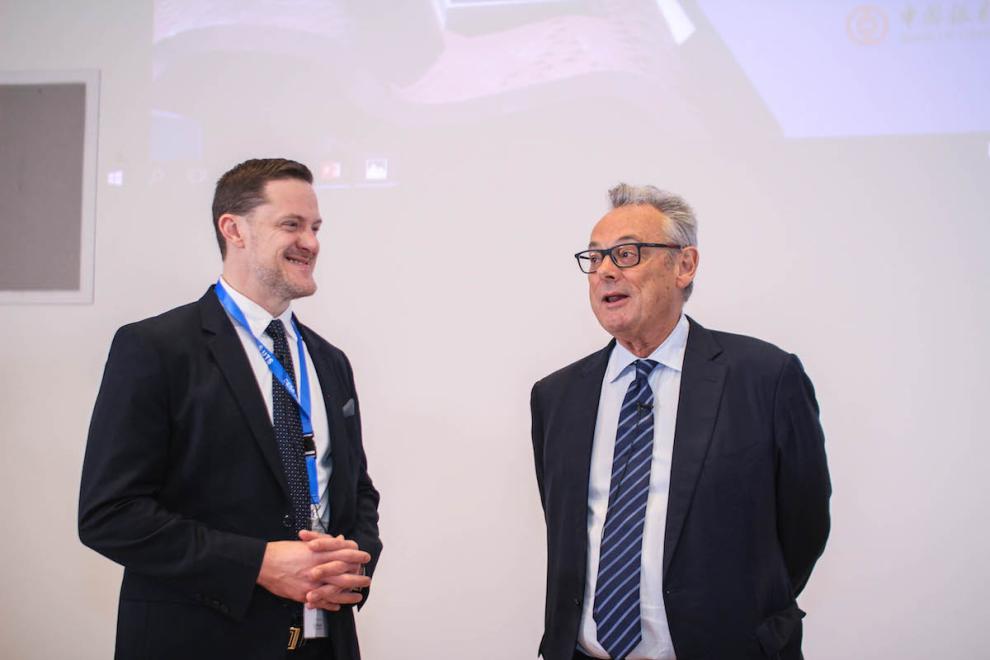
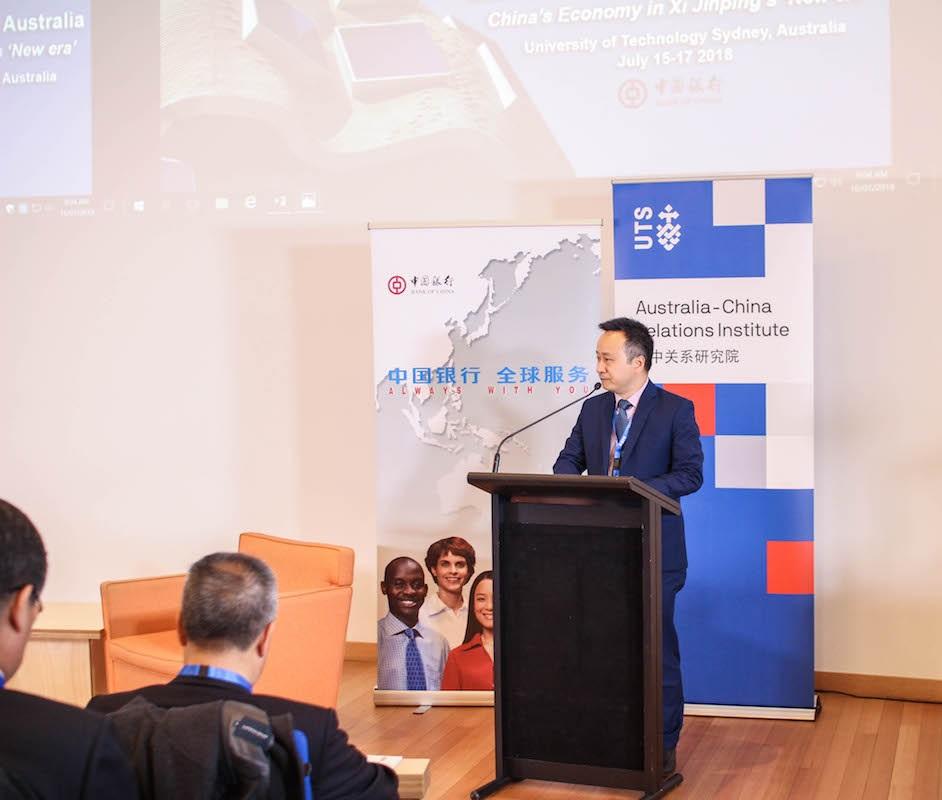
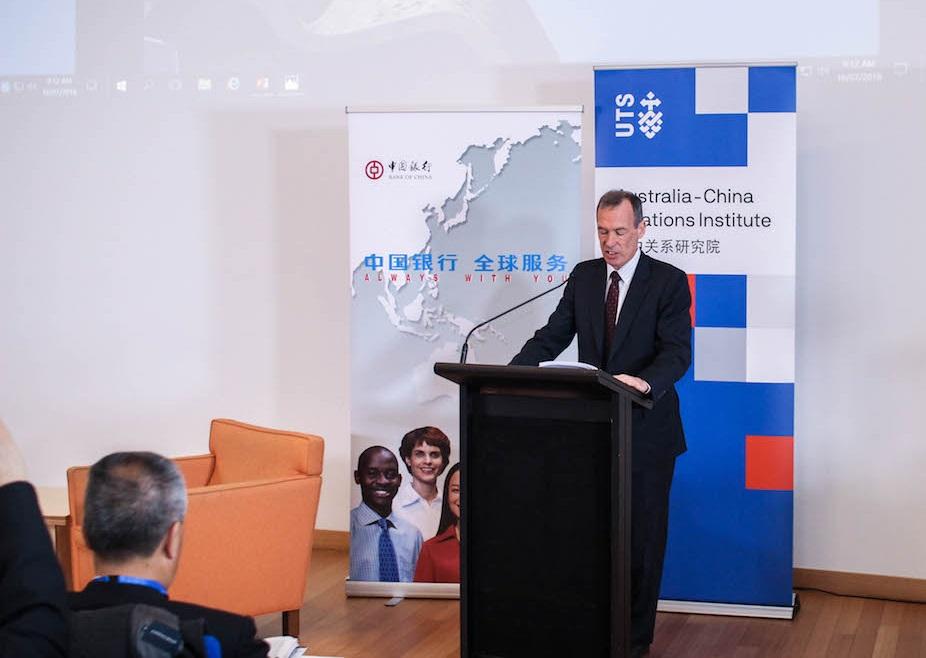
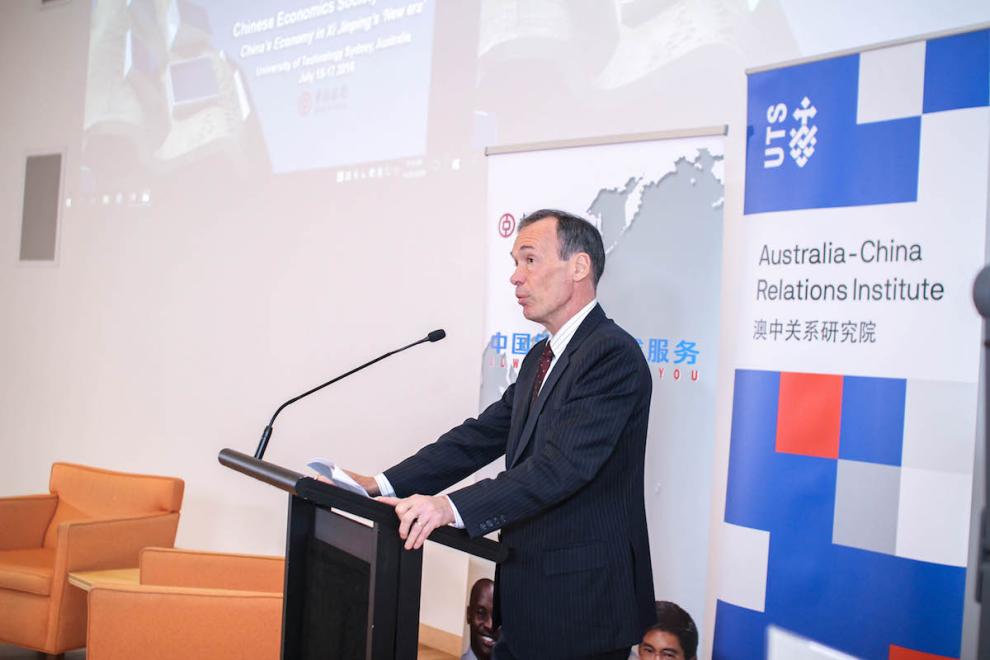
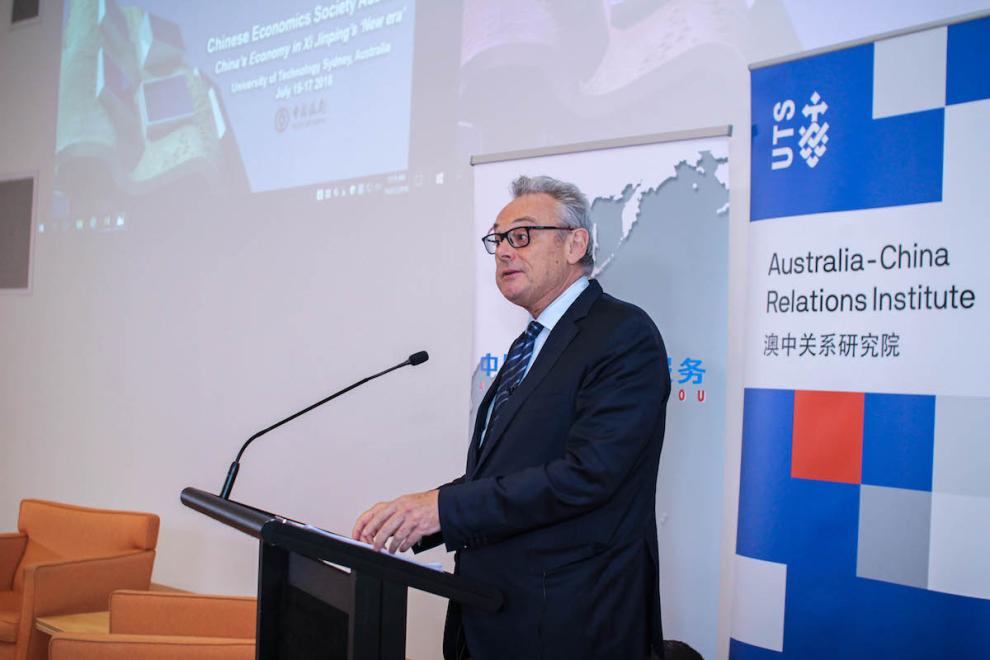
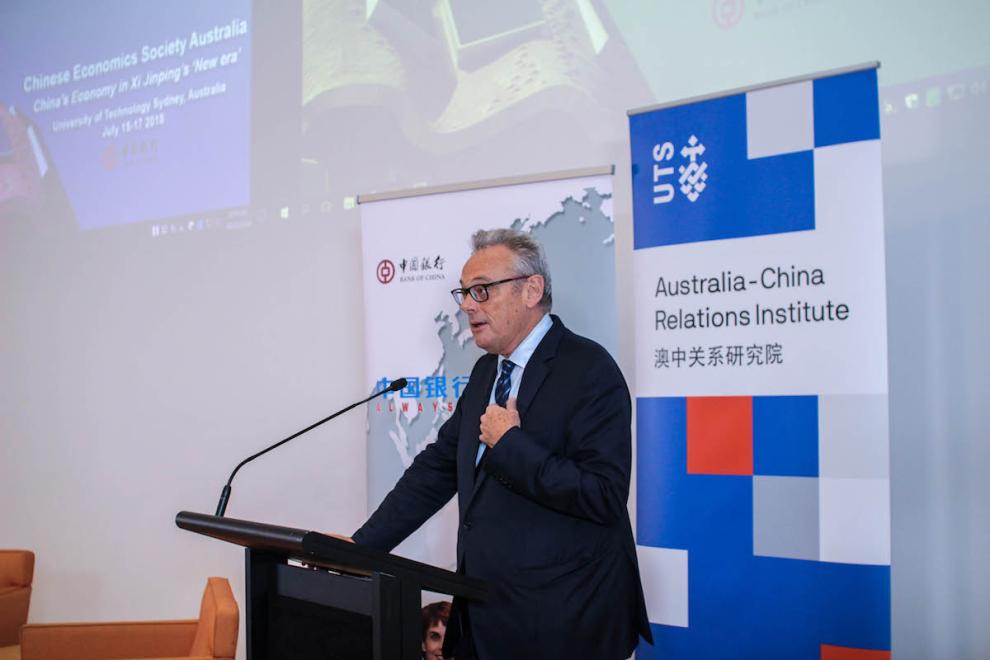
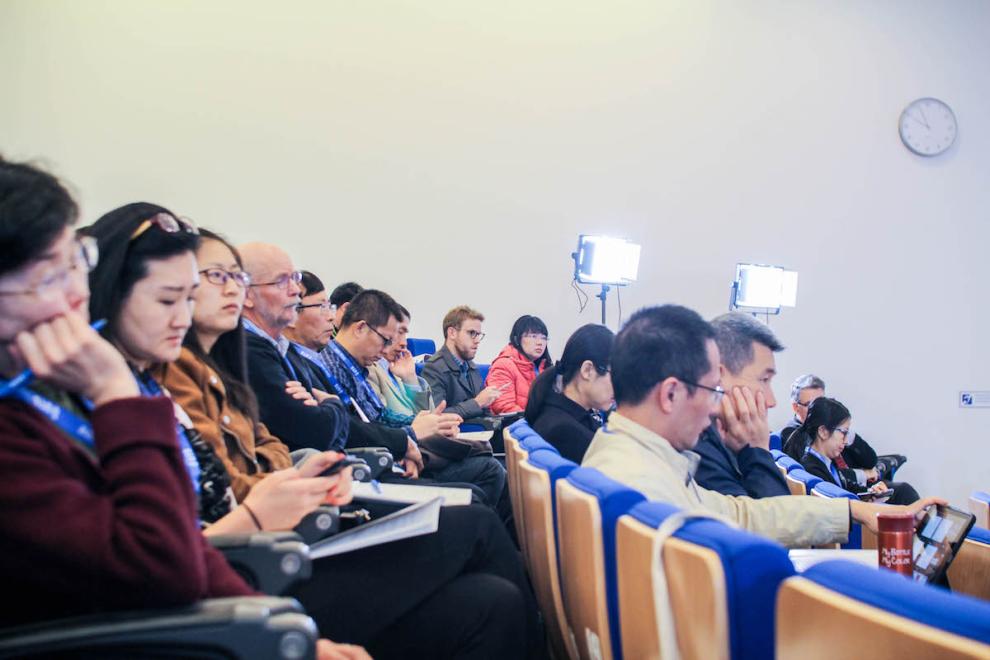
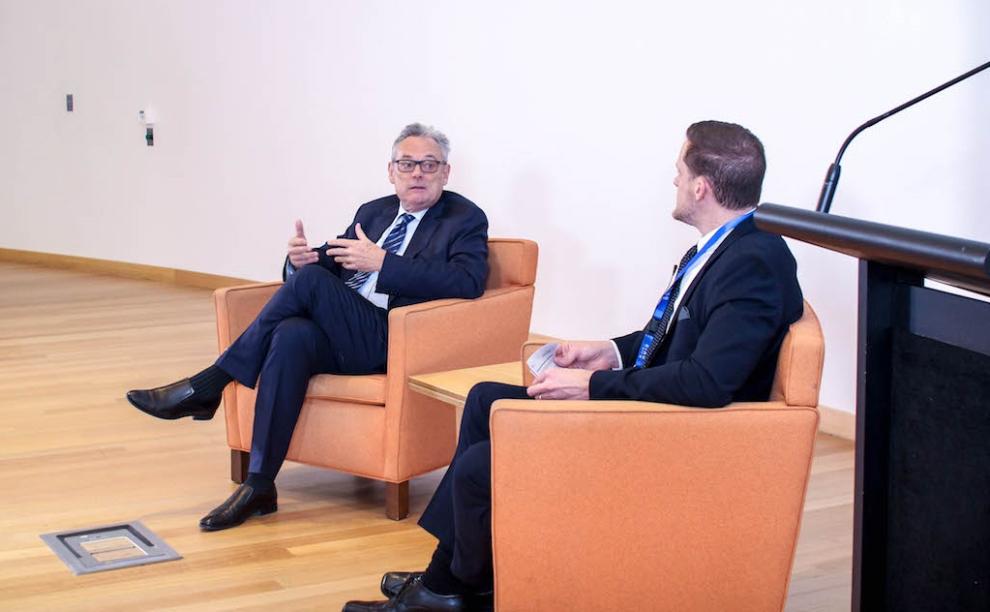
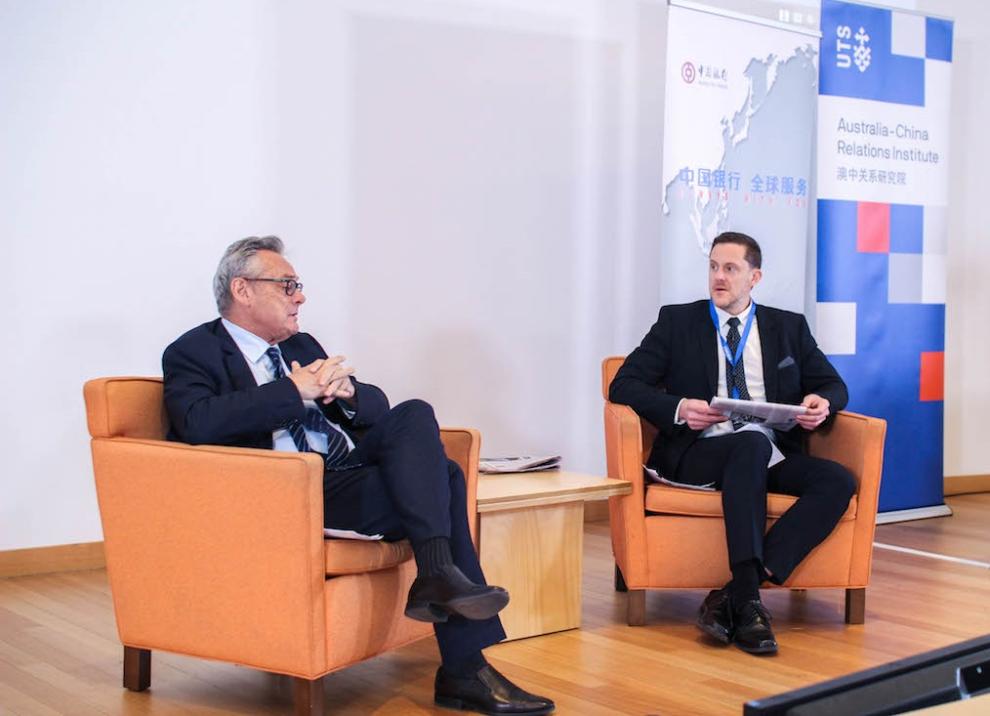
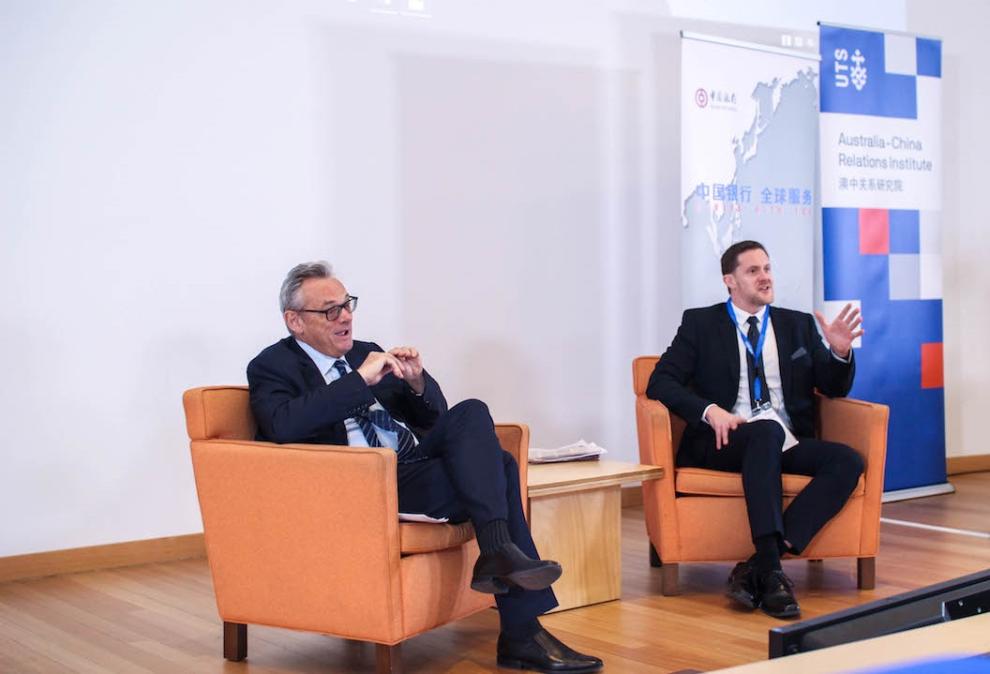
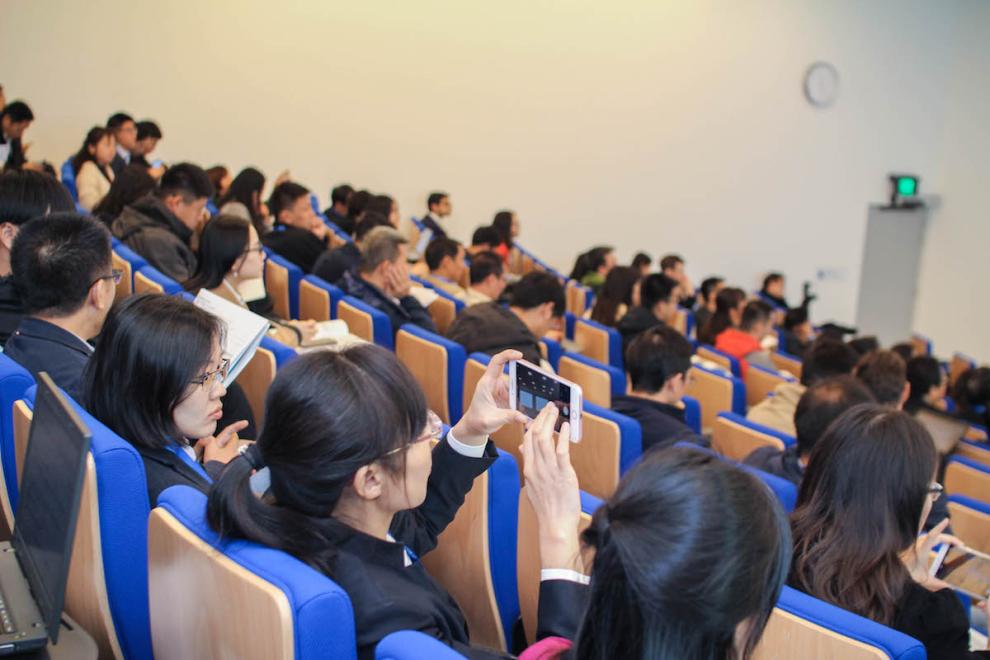
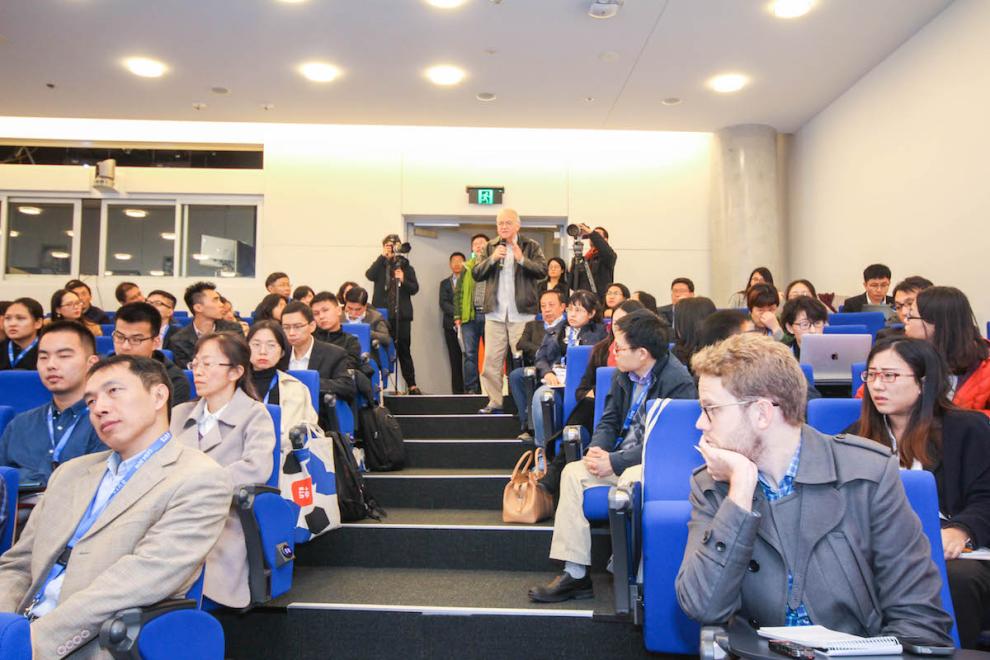
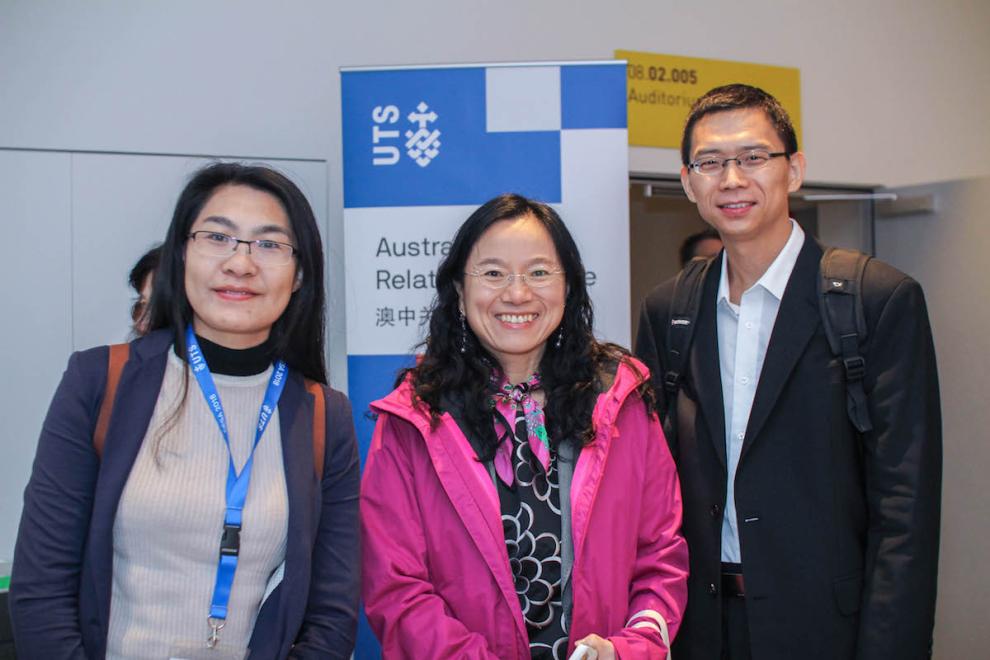
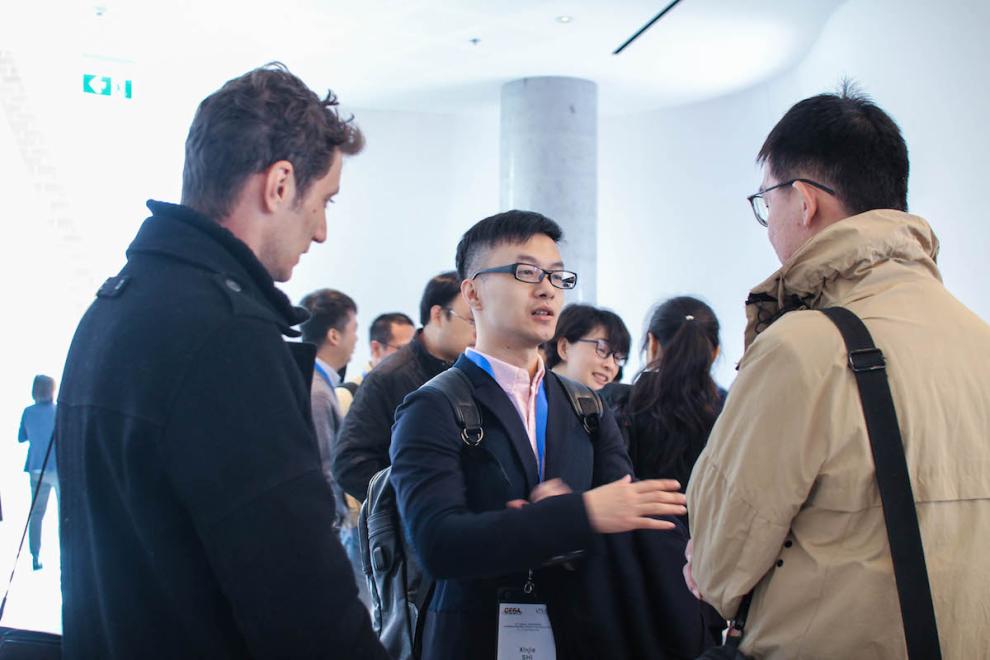
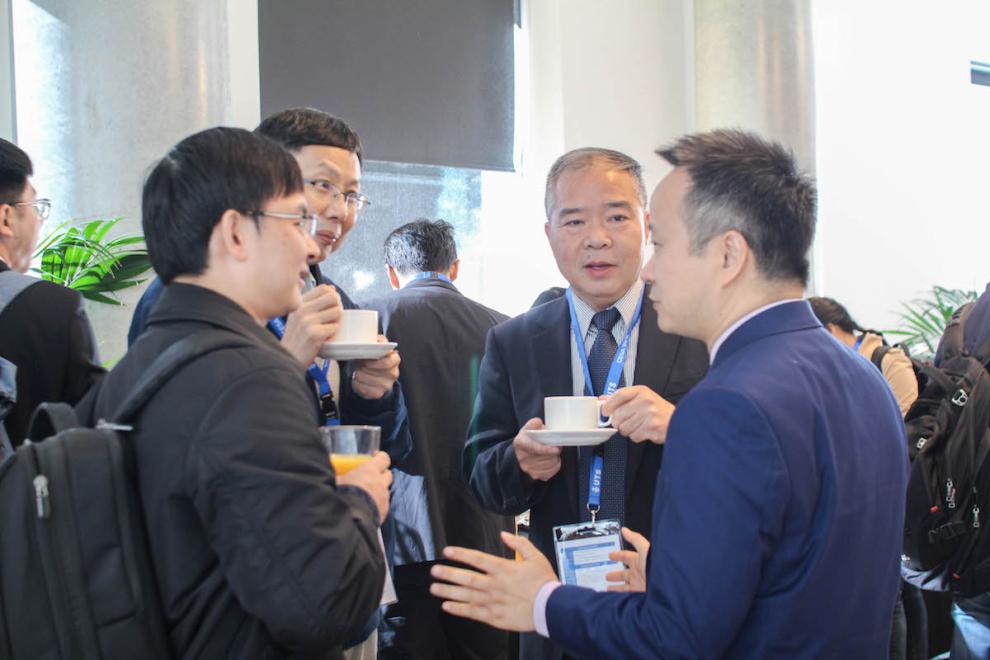
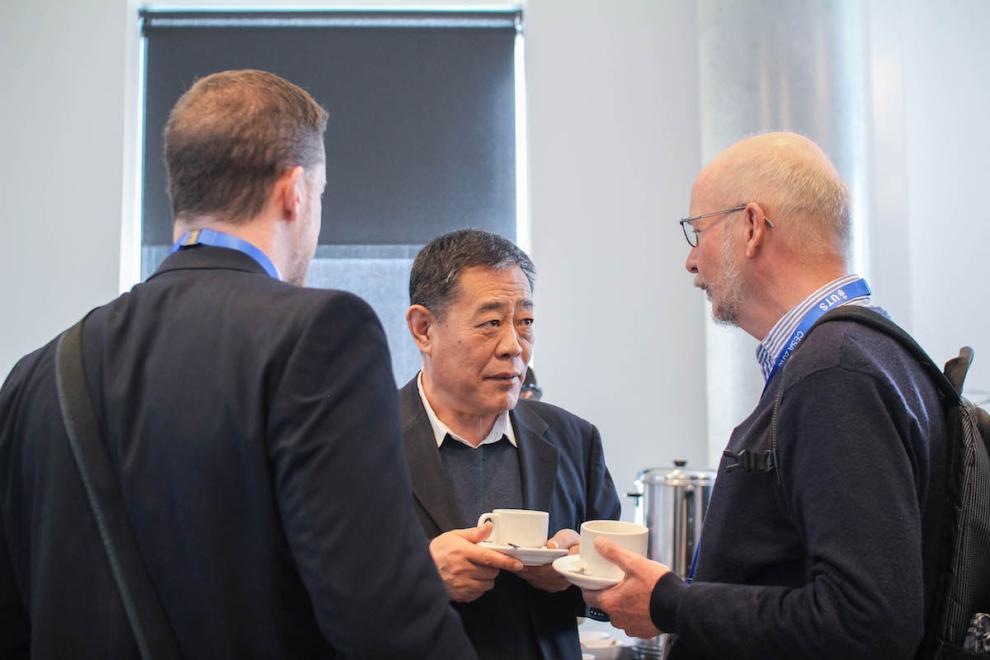
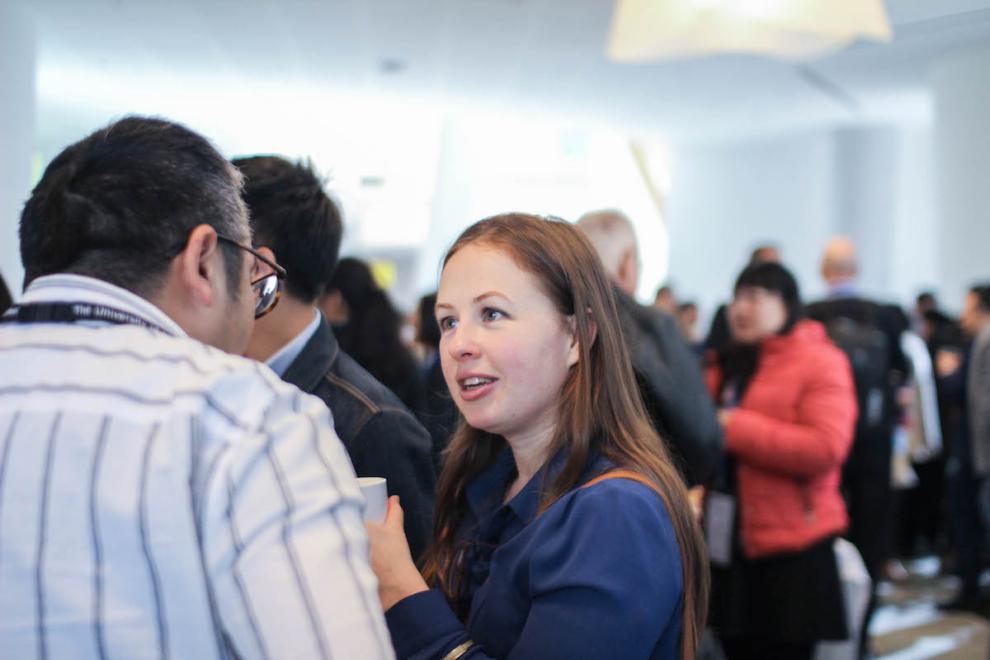
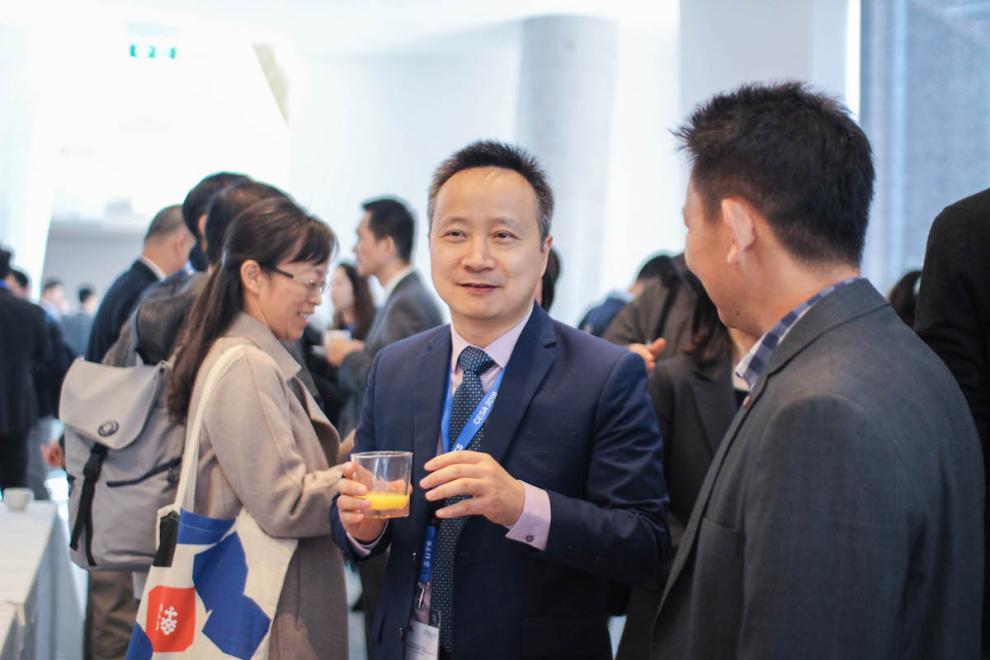
Speaker
Geoff Raby
Dr Geoff Raby was Australia’s Ambassador to China from 2007 to 2011. Following completion of his Ambassadorial term, after 27 years in the public service, mostly with DFAT, he resigned to establish Geoff Raby and Associates Ltd. Dr. Raby also holds a number of non-executive, independent director positions with ASX-listed companies, i.e. OceanaGold, Yancoal and iSentia. Dr. Raby was appointed to the Investment Attraction South Australia Advisory Board on March 29 2016. In China, Dr. Raby serves as Co-Chair of Corrs Chambers Westgarth’s China practice. He is head of Trade Policy at the London-based think-tank Policy Exchange. Dr. Raby is a member of the non-for-profit Advance Global Advisory Board, University of Sydney’s China Studies Center Advisory Board, La Trobe University Asia Advisory Board, and the Foundation of the National Gallery of Victoria.
